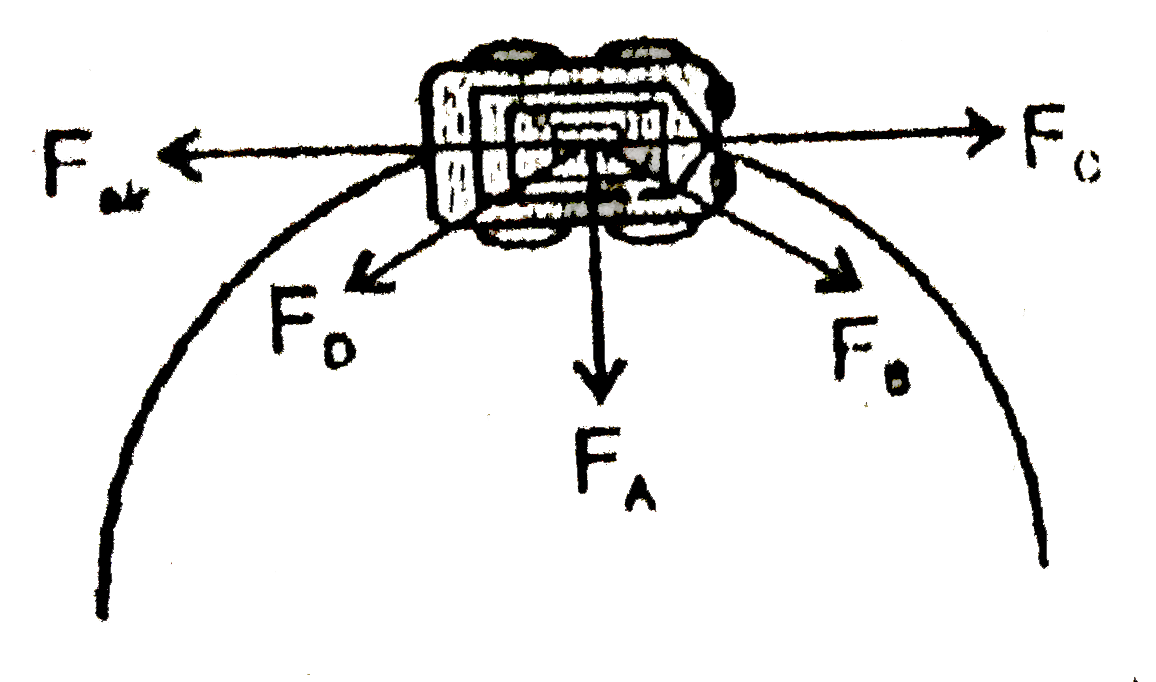(A) : Contact forces like viscous force, air resistance are electromagnetic in nature
(R) : At the microscopic level, all bodies are made of charged constituents
Both (A) and (R) are true and (R) is the correct explanation of (A)
Both (A) and (R) are true and (R) is not the
(A) is true but ( R) is false
Both (A) and (R ) are false
The correct Answer is:A
To solve the question, we need to analyze the assertion (A) and the reason (R) given in the problem.
Step 1: Understand the Assertion (A)
The assertion states that contact forces like viscous force and air resistance are electromagnetic in nature.
- Explanation: Contact forces arise due to the interactions between the surfaces of objects. Viscous force occurs when a fluid flows over a surface, and air resistance acts on objects moving through the air. Both of these forces can be attributed to electromagnetic interactions at the microscopic level, where charged particles (like electrons and protons) in the atoms of the materials interact with each other.
Step 2: Understand the Reason (R)
The reason states that at the microscopic level, all bodies are made of charged constituents.
- Explanation: This statement is true because all matter is composed of atoms, which contain charged particles (electrons and protons). The presence of these charged particles is fundamental to the nature of matter and explains why electromagnetic forces can arise between different bodies.
Step 3: Analyze the Relationship Between A and R
Now we need to determine if R correctly explains A.
- Explanation: The reason (R) provides a valid explanation for the assertion (A). Since all bodies are made of charged constituents, the electromagnetic interactions between these charged particles lead to the contact forces like viscous force and air resistance. Therefore, R supports A by explaining the underlying principle of electromagnetic interactions that give rise to these forces.
Conclusion
Both the assertion (A) and the reason (R) are true, and R is the correct explanation of A.
Final Answer
Both A and R are true, and R is the correct explanation of A.
---
The assertion states that contact forces like viscous force and air resistance are electromagnetic in nature.
The reason states that at the microscopic level, all bodies are made of charged constituents.
Now we need to determine if R correctly explains A.
Both the assertion (A) and the reason (R) are true, and R is the correct explanation of A.
Both A and R are true, and R is the correct explanation of A.
Similar Questions
(A) : The viscous force, air resistance etc., are examples of contact force
(R) : Contact force on an object arises due to contact with some other object
View Solution(A) : When you shake hands with your friend the force involved is electromagnetic in nature.
(R ) : Frictional force is electromagnetic in nature
View SolutionThe sum of all electromagnetic forces between different particles of a system of charged particle is zero
View SolutionA : In the presence of air resistance, if the ball is thrown vertically upwards then time of ascent is less than the time of descent.
R : Force due to air friction always acts opposite to the motion of the body.
View SolutionA car travels with constant speed on a circular road on level ground. In the figure shown, Fair is the force of air resistance on the car. Which of the other forces best represent the horizontal force of the road on the car's tires ?

View SolutionThe body of mass 400 g slides on a rough horizontal surface. If the frictional force is 3.0 N, find a. the angle made by the contact force on the body with the vertical and b. the magnitude of the contact force. Take g=10ms2
View SolutionA: Gravitational force is always attractive but electromagnetic force can be attractive or repulsive:
R : Mass comes only in one variety (there is no negative mass) but charge comes in two varieties. (Positive and negative charge)
View SolutionIdentify the non-contact forces:
Gravitational force, Tension force, Friction force, Magnetic force, Air resistance force, Electrostatic force.
View SolutionA car travels with constant speed on a circular road level ground in figure Fair is the force of air resistence acts opposite to the motion of car which of the other forces shown best represents the horizontal force of the road on the car's tires?

View SolutionThe measure of net molecular polarity is a quantity called dipole moment which is defined as the magnitude of the charge Q at either end of the molecular dipole times the distance 'r' between the charge :
μ=Q×r
Molecular polarities give rise to some of the forces that occur between molecules.Such forces are termed as intermolecular forces.These molecular forces are of several different types including dipole-dipole forces, London dispersion forces, hydrogen bonds and ion-dipole forces (operate between ions and molecules).These intermolecular forces are electrical in origin and results from the mutual attraction of unlike charges or the mutual repulsion of like charges.
A formal positive charge on the central atom affect the size of orbitals.A formal positive charge on central atom will pull in all electrons towards the nucleus and this will leads to the contraction in size of orbitals.
Which of the following molecule does not have dipole moment ?
View Solution
